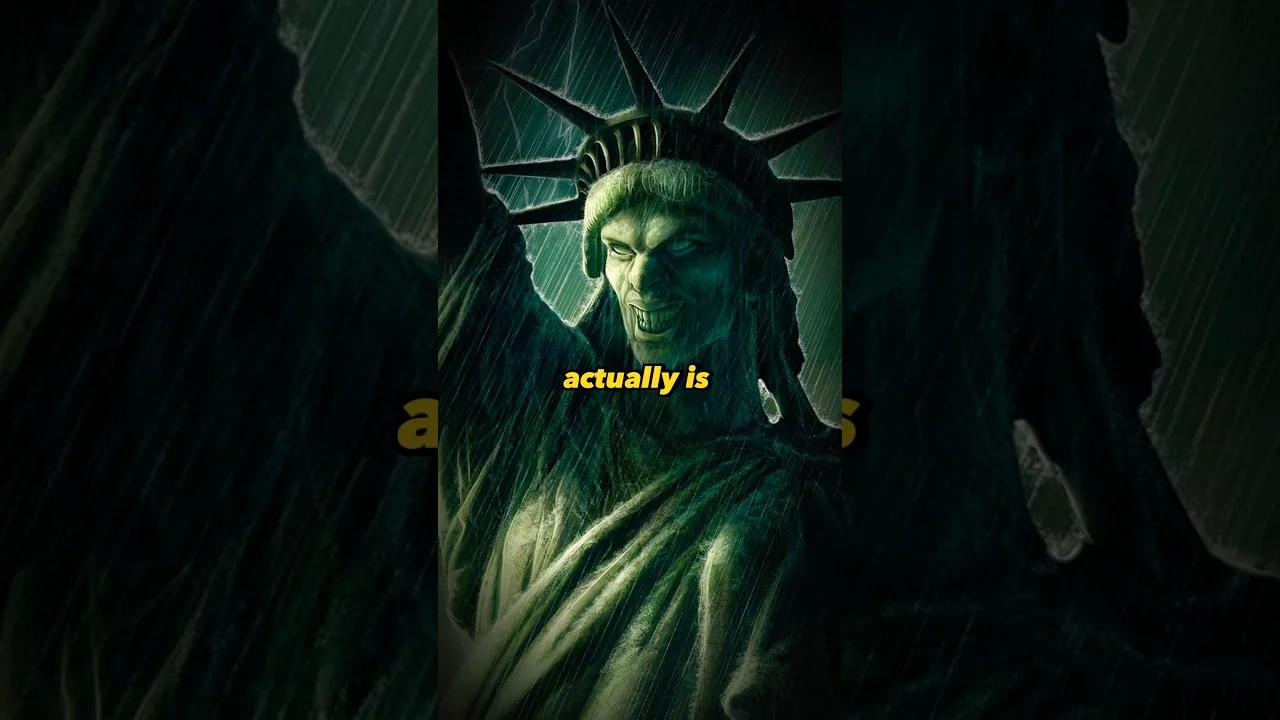When one thinks of the Statue of Liberty, visions of freedom, hope, and a welcoming symbol for immigrants spring to mind. However, beneath the surface shines a more enigmatic story. In this article, we will explore some creepy, lesser-known facts about the iconic monument that might just make you question everything you thought you knew about its grandeur. Are you ready to dive into the mysteries lurking in plain sight?
1. A Hidden History of Death and Mourning
Few visitors to Liberty Island are aware of its somber past. Prior to Lady Liberty’s arrival, the area was the site of several unfortunate events, including the deaths of numerous sailors. The waters around the island were perilous, leading to shipwrecks and loss of life. This eerie backdrop sets a haunting tone for the statue’s dedication. Furthermore, many immigrants who arrived in New York Harbor succumbed to diseases like cholera or typhus, with their bodies reputedly buried in unmarked graves nearby.
2. The Ghosts of Immigrants Past
With such a tumultuous history, it’s no surprise that some believe the souls of immigrants still roam the grounds. Reports by guards and visitors suggest ghostly apparitions have been seen at night, embodying the spirit of those who longed for a new life in the land of opportunity. Imagine standing on Liberty Island after dark, pondering whether you might encounter the wispy figure of someone who once sought freedom.
3. Lady Liberty’s Original Color
Contrary to the verdant green hue she displays today, the Statue of Liberty was initially a brilliant copper color. Over the years, the elements caused a patina to develop, transforming her appearance into the statue we recognize today. The transformation is not just physical; some speculate that this eerie change signifies the passage of time and the myriad of stories she has witnessed. Could this color shift be a metaphor for the evolving meaning of liberty itself?
4. The Mysterious Face
What if you discovered that the face of the Statue of Liberty is modeled after a particular individual? Some argue that sculptor Frédéric Auguste Bartholdi based the face on his mother, Charlotte. This familial connection imbues the statue with a rather morose undertone. The idea that a mother’s visage embodies a symbol of hope raises questions about identity, legacy, and the weight of familial expectations. Does this revelation alter your perception of her welcoming smile?
5. An Unfinished Monument
In a peculiar twist of fate, Lady Liberty is, in her own way, an unfinished monument. Originally intended to represent freedom from tyranny, her design was altered along the way, leaving some elements incomplete. Scholars argue that the statue’s broken shackles at her feet symbolize liberation but also reflect the ongoing struggle against oppression. Does this open-ended story serve as a chilling reminder that the quest for freedom is anything but definitive?
6. Perched Near a Former Fort
Liberty Island also harbors a former military installation, Castle Clinton, which served as a fort that protected New York Harbor. Completed in the early 19th century, this imposing structure is enveloped in tales of war and conflict. The juxtaposition of its military history against the ideals that Lady Liberty embodies stands as a potent reminder of the constant struggle for peace amidst conflict. Have you ever wondered how the notion of liberty exists alongside the reality of war?
7. A Secret Time Capsule
In 1886, when Lady Liberty was inaugurated, she was celebrated as a gift from France. However, unbeknownst to many, within the pedestal lies a time capsule containing artifacts that depict life in 19th-century America. A macabre aspect arises when considering what insights those objects may provide about societal values, fears, and hopes during that time. If you could open the capsule, what would you expect to find, and how might it reflect on the human condition today?
8. The Abandoned Crown Platform
The crown of the Statue of Liberty was once a popular attraction, providing panoramic views of New York City. However, in recent years, safety and conservation concerns have limited access, leaving many to wonder what secrets the vantage point holds. Eerie tales of visitors feeling an unsettling energy while in the crown abound. What stories does this once-crowded space have to tell now that it remains largely abandoned?
9. A Symbol with Wounded Symbolism
Despite her stature as a beacon of hope and freedom, Lady Liberty has also been associated with darker themes of immigration policy and restrictions. Throughout history, she has witnessed the fluctuating tides of immigration, embodying both the welcoming spirit and the painful exclusion of those denied entry. How do these contrasting narratives intertwine to form a more complex picture of what liberty truly means?
10. The Revolutionary Connection
The design of the Statue of Liberty draws inspiration from the Roman goddess Libertas, signifying freedom and the obtained rights of citizens. This connection to ancient ideals adds a layer of historical eeriness, suggesting that liberty has always come at a cost. As you stand before her towering form, are you reminded of the revolutionary sacrifices that paved the way for the freedoms enjoyed today?
In conclusion, the Statue of Liberty stands not only as an emblem of hope but also as a vessel of untold stories, dark histories, and complex emotions. Her presence poses questions about identity, legacy, and the enduring struggle for freedom. Next time you find yourself gazing upon her imposing silhouette, consider the shadows that linger alongside her glow. Would you dare to explore the hidden corners of her story?









